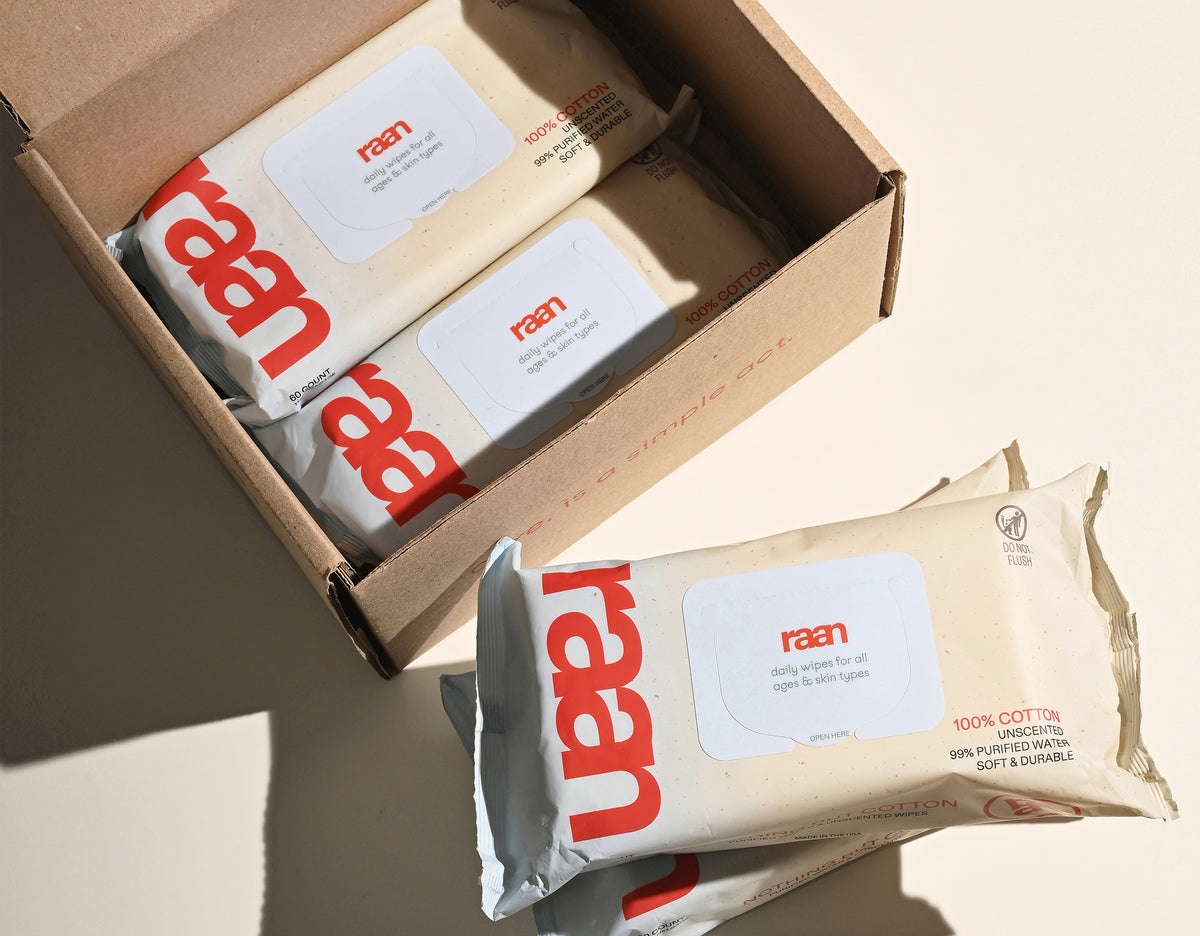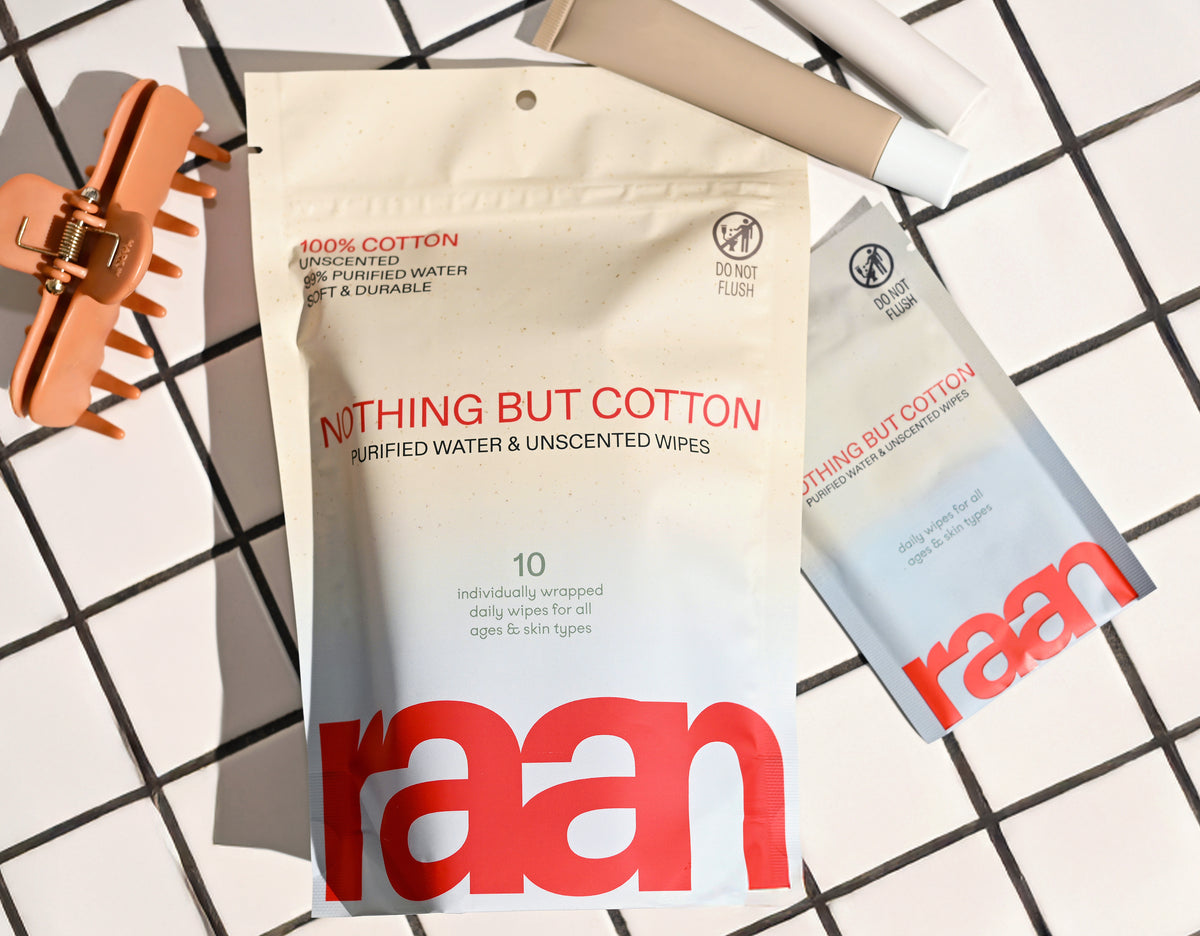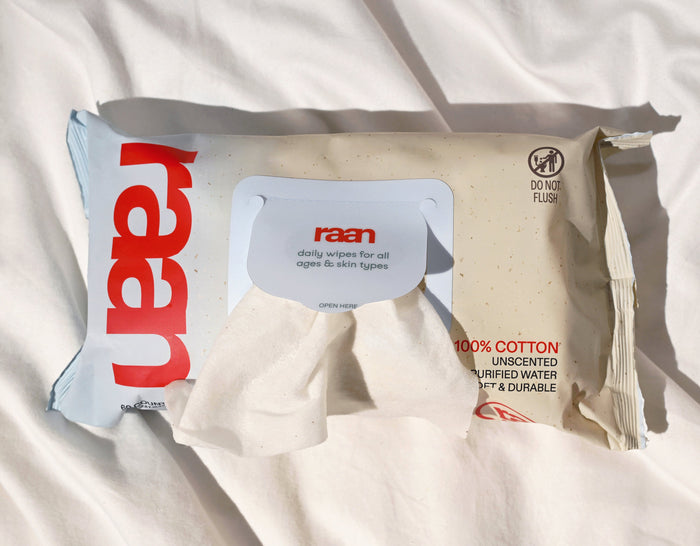What Are Biodegradable Wipes and Why They Matter
Quick Answer
Biodegradable wipes are wet wipes made from plant-based materials like cotton, bamboo, or wood pulp that break down naturally over time through microbial action. Unlike conventional wipes containing plastic fibers, truly biodegradable options use unbleached, 100% cotton or other natural fibers with minimal synthetic additives, making them safer for both skin and environment.
Key Takeaways
- Biodegradable wipes are made from plant-based materials such as cotton, bamboo, or wood pulp.
- These wipes naturally break down over time through microbial action.
- Unlike conventional wipes, biodegradable wipes avoid plastic fibers and use natural fibers.
- Truly biodegradable wipes are typically unbleached and contain minimal synthetic additives.
- Biodegradable wipes are safer for both the skin and the environment.
Table of Contents
- What Are Biodegradable Wipes and Why They Matter
- What Makes a Wipe Truly Biodegradable
- The Science Behind Biodegradation
- The Hidden Problem with Conventional Wipes
- A New Standard: What Real Transparency Looks Like
- Understanding Certifications and Labels
- Market Categories: Finding the Right Wipes for Your Needs
- The Critical Truth About Disposal
- The Future of Biodegradable Wipes: What's Coming Next
- Making the Right Choice: Your Biodegradable Wipes Decision Framework
The wet wipe industry has exploded into a billion-dollar market, but here's what most people don't realize: the vast majority of wipes on store shelves contain hidden plastics and synthetic materials that persist in our environment for years. Even products labeled as "biodegradable" often include property-enhancing additives that limit their ability to break down naturally.
We're seeing a surge in demand for genuinely sustainable alternatives as consumers become more aware of the environmental impact of their everyday choices. The problem? Navigating the maze of misleading claims and vague marketing language that dominates this space.
Key Fact: 93% of sewer blockages are attributed to wipes, costing governments millions annually in cleanup efforts, even when products claim to be "flushable" or "biodegradable."
What Makes a Wipe Truly Biodegradable

A biodegradable wipe breaks down through natural processes when exposed to moisture, oxygen, and microorganisms. But the reality is more complex than most brands want you to know.
Material composition is everything. Genuinely biodegradable wipes use plant-based fibers like:
- Unbleached, 100% cotton (the gold standard for skin safety and environmental breakdown)
- Bamboo fibers (fast-growing, renewable resource)
- Wood pulp cellulose (varies widely in processing methods)
- Plant-based rayon (though processing can involve chemicals)
The catch? Many wipes marketed as "biodegradable" still contain synthetic binding agents, plastic-based strengtheners, or chemical treatments that prevent complete breakdown. These additives help the wipe hold together when wet but create persistence in the environment.
What to Watch For: Terms like "plant-based blend" or "natural fibers" can be misleading. Look for specific material callouts like "100% cotton" or "unbleached cotton" rather than vague eco-friendly language.
The Science Behind Biodegradation
Here's where it gets interesting. For a wipe to truly biodegrade, it needs specific environmental conditions that are rarely met in real-world disposal scenarios.
Enzymatic and microbial action drives the breakdown process. Microorganisms produce enzymes that break down natural fibers at the molecular level. But this requires:
- Consistent moisture levels
- Appropriate temperature ranges
- Oxygen availability (for aerobic decomposition)
- Presence of the right microorganisms
Most landfills lack these conditions. Wastewater treatment systems aren't designed to handle wipes, even biodegradable ones. And marine environments? The breakdown process slows dramatically in saltwater conditions.
Industry experts recommend home composting for truly biodegradable wipes, but only if they're free from synthetic preservatives and made from 100% natural materials.
The Hidden Problem with Conventional Wipes

Most conventional wipes contain a blend of synthetic materials that create long-term environmental problems. We're talking about polyester, polypropylene, and other plastic-based fibers that fragment into microplastics but never fully disappear.
These synthetic fibers serve a purpose - they make wipes stronger, more absorbent, and longer-lasting. But they also create persistence in the environment that can last decades.
Biodegradable Wipes
- Break down naturally in proper conditions
- Reduce microplastic pollution
- Often gentler on sensitive skin
- Made from renewable resources
Conventional Wipes
- Contain persistent synthetic materials
- Contribute to sewer blockages
- Generate microplastic pollution
- Often include harsh preservatives
The economic impact is staggering. Sewer systems worldwide spend millions annually removing wipes that don't break down as advertised. These costs get passed back to consumers through higher utility bills and municipal taxes.
A New Standard: What Real Transparency Looks Like
This is where the conversation gets personal. After years of navigating misleading "clean" claims, we realized how rare it is to find wipes that are genuinely safe, honest, and rooted in function.
Raan cotton wipes represent a fundamentally different approach. We use unbleached, 100% cotton - no synthetic fibers, no plastic strengtheners, no mystery ingredients. Just five EWG-verified ingredients that you can actually pronounce: purified water, food-grade preservatives (sodium benzoate and potassium sorbate), skin-conditioning ethylhexylglycerin, organic aloe, and citric acid for pH balance.
The Raan Difference: While other popular brands add synthetic materials for durability, we preserve the natural qualities of cotton. It's stronger than you'd expect, gentle enough for newborn skin, and actually biodegrades when disposed of properly.
Our packaging reflects this commitment too. We use 70% less plastic than standard wipes by skipping the hard plastic lid. The pouch contains 35% post-consumer waste, and our boxes are 100% recyclable.
This isn't about perfection - it's about transparency. We're upfront about our limitations, our process, and exactly what goes into every wipe. No greenwashing, no vague claims, just the whole truth about what you're bringing into your home and onto your skin.
Understanding Certifications and Labels

The biodegradable wipes market is flooded with confusing claims and misleading certifications. Here's how to cut through the noise and identify products that actually deliver on their environmental promises.
Key Distinction: "Biodegradable" and "compostable" aren't the same thing. Biodegradable means it breaks down naturally over time, while compostable means it breaks down into nutrient-rich soil under specific conditions.
Home vs. Industrial Compostable Certifications
Industrial compostable wipes meet ASTM D6400 or EN 13432 standards, breaking down completely within 90 days in commercial composting facilities that reach temperatures of 140-160°F. These facilities have controlled moisture, oxygen, and microbial conditions that most home composters can't replicate.
Home compostable wipes carry certifications like OK Compost Home or AS 5810, designed to break down in backyard compost bins within 12 months. These are rarer but more practical for most consumers.
Reality Check: Many wipes labeled "compostable" only qualify for industrial composting, but most communities lack access to these facilities. Always check which type of composting the certification covers.
How to Read Product Labels Like a Pro
Genuinely biodegradable wipes will specify their material composition clearly. Look for these indicators:
- Unbleached, 100% cotton - The gold standard for biodegradability and skin safety
- Bamboo fiber - Fast-growing, renewable, breaks down well
- Wood pulp cellulose - Varies by processing method
- Plant-based rayon - Can be biodegradable but check processing chemicals
Red flags include vague terms like "natural blend," "eco-friendly," or "plant-based" without specific material percentages. These often indicate synthetic additives that prevent complete biodegradation.
Industry experts recommend avoiding any wipe that doesn't list its exact fiber composition. If a brand won't tell you what their wipes are made from, that's usually because they contain synthetic materials.
Market Categories: Finding the Right Wipes for Your Needs
The biodegradable wipes market spans multiple categories, each with different formulations and intended uses. Understanding these distinctions helps you choose products that align with both your needs and environmental values.
Personal Care Wipes
This category includes baby wipes, facial cleansing wipes, and general body wipes. The key consideration here is skin safety alongside environmental impact.
Baby wipes need to be gentle enough for newborn skin while effectively cleaning messes. Look for products with minimal ingredients, no fragrances, and certifications like EWG Verified that ensure ingredient safety.
Facial wipes should be pH-balanced and free from harsh preservatives that can disrupt skin barrier function. Many biodegradable options use organic aloe and plant-based cleansing agents.
Personal Care Biodegradable Wipes
- Gentler on sensitive skin
- Fewer synthetic preservatives
- Often fragrance-free
- Reduced environmental impact
Considerations
- May be less durable when wet
- Often more expensive
- Limited shelf life
- Require proper disposal
Household Cleaning Wipes
Cleaning wipes face a different challenge: they need to be effective against dirt and grime while remaining environmentally friendly. Many biodegradable cleaning wipes use plant-based surfactants and avoid harsh chemicals like ammonia or bleach.
The trade-off is often cleaning power. Biodegradable cleaning wipes may require more effort for tough stains, but they're safer around children and pets while reducing chemical residues in your home.
Specialty Applications
Pet care wipes need to be safe if ingested while effectively cleaning fur and paws. Biodegradable options often use food-grade ingredients and avoid toxic preservatives.
Travel wipes prioritize portability and multi-use functionality. Biodegradable travel wipes can serve as hand wipes, surface cleaners, and personal hygiene products without the environmental guilt of conventional options.
Raan's Approach: Rather than creating different formulations for different uses, we designed one versatile wipe that works safely for the whole family. Our unbleached, 100% cotton wipes with just five ingredients handle everything from diaper changes to quick face cleanups to surface cleaning.
The Critical Truth About Disposal
Here's what the biodegradable wipes industry doesn't want you to know: even genuinely biodegradable wipes should never be flushed down the toilet. The "flushable" label is one of the most misleading claims in the entire industry.
Wastewater treatment systems aren't designed to handle any type of wipe, regardless of material composition. The mechanical processes that break down toilet paper don't work on wipes, which maintain their structure even when made from biodegradable materials.
Municipal Impact: Water treatment facilities report that 93% of sewer blockages involve wipes, costing taxpayers millions in cleanup and infrastructure repairs annually.
Home Composting: The Best Option
For truly biodegradable wipes made from 100% natural materials, home composting offers the best environmental outcome. The key is ensuring your wipes contain no synthetic preservatives or plastic-based strengtheners.
Wipes made from unbleached cotton, like Raan's, can go directly into compost bins. The cotton fibers break down completely within 3-6 months under proper composting conditions, contributing to soil health rather than environmental pollution.
When Trash Disposal is Necessary
If home composting isn't an option, responsible trash disposal is the next best choice. While biodegradable wipes will break down more slowly in landfills due to limited oxygen, they still represent a better environmental choice than synthetic alternatives that persist indefinitely.
The goal isn't perfection - it's progress. Choosing biodegradable wipes and disposing of them properly reduces your environmental impact even when ideal composting conditions aren't available.
Quick Answer: Never flush biodegradable wipes. Compost them if they're made from 100% natural materials, or dispose of them in regular trash as a responsible alternative to synthetic wipes.
The Future of Biodegradable Wipes: What's Coming Next
The biodegradable wipes industry is evolving rapidly, driven by consumer demand for genuinely sustainable products and stricter environmental regulations. Here's what industry experts predict will shape the next generation of earth-safe cleansing cloths.
Revolutionary Materials on the Horizon
Researchers are developing new plant-based fibers that maintain the durability of synthetic materials while ensuring complete biodegradation. Innovations include agricultural waste fibers from wheat straw and corn husks, which would otherwise be burned or composted anyway.
The most promising development is mycelium-based wipes - made from mushroom root structures that naturally decompose while offering exceptional strength when wet. Early testing shows these materials break down completely within 30 days in home compost conditions.
Industry Insight: Material scientists predict that within five years, biodegradable wipes will match or exceed the performance of synthetic alternatives while maintaining environmental benefits.
Stricter Standards and Clearer Labels
Government agencies are cracking down on misleading "flushable" and "biodegradable" claims. The Federal Trade Commission has issued new guidelines requiring specific testing data to support environmental claims, while several states are considering legislation that would ban non-biodegradable wipes entirely.
These changes benefit consumers by eliminating greenwashing and creating clear standards for what constitutes a truly biodegradable product. Expect to see more detailed ingredient lists and specific disposal instructions on packaging.
Environmental lawyers predict that within three years, any wipe labeled "biodegradable" will need to meet standardized testing requirements and include clear disposal instructions to avoid regulatory penalties.
Full Supply Chain Transparency
Leading brands are beginning to publish complete life-cycle analyses of their products, from raw material sourcing through disposal. This transparency allows consumers to make informed choices based on total environmental impact, not just end-of-life biodegradability.
The most progressive companies are implementing blockchain tracking systems that let consumers trace their wipes from the cotton field or bamboo grove through manufacturing to their doorstep.
Raan's Commitment: We've always believed in radical transparency. Our supply chain is completely traceable - from the specific cotton farms where our fibers are grown to the renewable energy that powers our manufacturing facilities.
Making the Right Choice: Your Biodegradable Wipes Decision Framework
Choosing truly biodegradable wipes requires looking beyond marketing claims to understand materials, certifications, and disposal options. The decisions you make today shape both your family's health and environmental impact for years to come.
Your Essential Buying Checklist
Before purchasing any biodegradable wipes, verify these non-negotiable criteria:
- Material composition clearly stated - avoid vague terms like "natural blend"
- No synthetic strengtheners or plastic fibers - these prevent complete biodegradation
- Minimal, identifiable ingredients - fewer components mean faster, more complete breakdown
- Appropriate certifications - look for EWG Verified, USDA Organic, or compostability standards
- Honest disposal instructions - trustworthy brands never claim their wipes are flushable
Reality Check: The most environmentally responsible choice isn't always the cheapest upfront option. Consider cost per use and environmental impact together when making your decision.
Beyond Individual Choices: Collective Impact
Your purchasing decisions send powerful signals to manufacturers about consumer priorities. Every biodegradable wipe you choose over a synthetic alternative demonstrates market demand for genuinely sustainable products.
The cumulative effect of informed consumer choices is already reshaping the industry. Major manufacturers are investing billions in sustainable materials research, while smaller companies like Raan are proving that transparency and environmental responsibility can coexist with product effectiveness.
Bottom Line: The best biodegradable wipes combine unbleached, 100% natural fibers with minimal ingredients and complete transparency about materials and disposal. Look for specific certifications, avoid "flushable" claims, and choose brands that provide clear information about their entire supply chain.
The biodegradable wipes market will continue evolving as technology advances and regulations tighten. By understanding the science behind biodegradation, reading labels carefully, and choosing products from transparent manufacturers, you're not just making a purchase - you're supporting a fundamental shift toward more sustainable personal care products.
The future of cleaning and personal care lies in products that work effectively without compromising environmental health. Biodegradable wipes represent one piece of this larger puzzle, offering a practical way to reduce your environmental footprint while maintaining the convenience and effectiveness you need for daily life.
For a deeper dive into the environmental and economic impact of wipes, see this comprehensive industry analysis.
Frequently Asked Questions
What makes a wipe truly biodegradable?
A truly biodegradable wipe is made from materials that can break down naturally through microbial activity without leaving harmful residues. This means it’s composed of plant-based fibers like unbleached cotton and uses minimal, non-synthetic ingredients that don’t persist in the environment. Avoiding plastics, synthetic binders, and harsh chemicals is key to genuine biodegradability.
How long do biodegradable wipes take to break down in a landfill?
In a landfill, biodegradable wipes can take several months to a few years to break down, depending on conditions like moisture, temperature, and microbial presence. Since landfills often lack oxygen and the right environment for decomposition, this process can be slower than in composting settings. So while biodegradable wipes are better than conventional plastic-based ones, their breakdown timeline varies with disposal conditions.
Can biodegradable wipes be composted at home?
Most biodegradable wipes made from natural fibers can be composted at home if they don’t contain synthetic additives or preservatives that inhibit decomposition. However, it’s important to check the specific product’s ingredients and certifications because some food-grade preservatives or additives may slow the process. For best results, add wipes in small amounts to a healthy, balanced compost pile where moisture and airflow support natural breakdown.
Are biodegradable wipes safe for septic systems?
Biodegradable wipes that are free of plastics and harsh chemicals are generally safer for septic systems than conventional wipes, but they should still be used sparingly. Even natural fibers take time to break down and can cause buildup if flushed frequently. The safest approach is to dispose of wipes in the trash rather than the toilet to protect your septic system and plumbing.
Do biodegradable wipes cost more than regular wipes?
Biodegradable wipes often cost a bit more than standard wipes because of the higher-quality, earth-derived materials and responsible sourcing involved. Using unbleached cotton and food-grade preservatives, plus reducing plastic packaging, adds to production costs. This investment reflects a commitment to transparency, safety, and true environmental care rather than hidden shortcuts or greenwashing.






